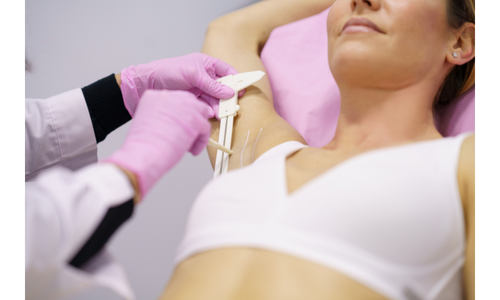
Hyperhidrosis “excessive sweating” means. Hyperhidrosis impairs the quality of life, which can harm a person's social life.
Is every increase in sweating hyperhidrosis/does it require treatment?
Sweating is a natural reaction that occurs in response to an increase in body temperature. It is normal for there to be increased sweating in the body during situations that cause an increase in body temperature (hot environment, physical exercise, anxiety, fear). If excessive sweating occurs without the above-mentioned conditions and indicates a poor mental state of the person. If it affects your health, prevents your social life, affects your choice of clothing, or reduces your school/work efficiency, it may need to be treated.
Does the sweat of hyperhidrosis patients smell?
Sweat is actually an odorless liquid. However, in case of excessive sweating, the number of bacteria in the feet and armpits may increase due to sweat. This increase is bad. It may cause odor.
How is the disease diagnosed, what tests are performed?
The diagnosis of hyperhidrosis is made by dermatologists. Your doctor will ask you about your history. and if he deems it necessary based on your examination findings, he may request some tests to understand the cause of excessive sweating. It may not be necessary to perform detailed examinations in every patient.
How common is hyperhidrosis?
Hyperhidrosis is rare in society. People of all ages and genders can be affected.
Where does hyperhidrosis affect the body?
The disease can affect a limited area of the body or more than one. Widespread involvement in the region and throughout the body is also possible. Depending on the width of the affected area, the disease is called "limited hyperhidrosis". and “diffuse hyperhidrosis” It is called.
What is limited hyperhidrosis?
It is the most common type of hyperhidrosis. Both sides of the body are affected simultaneously. Palmç One or more of the inner areas, soles of the feet, armpits, scalp, and neck may be involved. The disease usually occurs during childhood or adolescence, and may improve with age. The cause of limited hyperhidrosis is unknown, and it occurs without any other disease. 1/3 of the patients may have similar sweating in their family, but it is not necessary. The patient's sweating may be constant, especially due to tension and embarrassment. It can be triggered or increased by emotions such as anxiety and excitement. There is usually no sweating during sleep.
What is common hyperhidrosis?
Increased sweating occurs in every part of the body. It can occur due to infections, hormonal diseases such as diabetes and overactive thyroid gland, nerve damage, gout, obesity, menopause and some medications. However, it can also be seen without any reason.
What are the treatment options for hyperhidrosis?
The choice of treatment depends on the type of sweating, It is seen that It is done by taking into consideration the areas, severity, and treatments used by the patient before. Among the treatment options; Medicines applied to the skin surface, iontophoresis, botulinum toxin injections, surgical interventions and oral medicines are included. All these treatment options have different levels of effectiveness and side effects.
What can patients do to cope with hyperhidrosis?
- Inner made of sweat-absorbent fabric (e.g. 100% cotton fabrics). çwearing underwear
- “underarm pad” which can be attached to the appropriate area of the clothes.
- Wearing wide-cut clothes made of natural, non-synthetic fibers
- Wearing leather shoes, airing them after taking them off
- Changing socks frequently.
- Using socks made of 100% cotton due to their sweat-absorbing properties or containing silver and copper threads due to their antibacterial properties
- Monosodium glutamate (chips, ready-made A food additive that can be found in many ready-made foods such as soups), foods containing caffeine (chocolate, coffee, tea), intensely spicy foods and avoiding alcohol consumption. >


